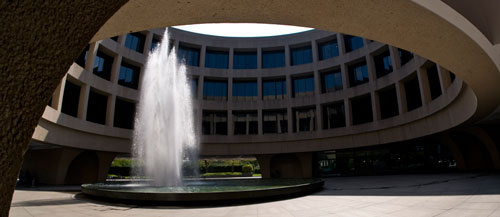Metropolis in the Machine Age
Feb 28–Sep 02, 2002


February 28 to September 2, 2002 (Second Floor)
This installation, with documentation from other Smithsonian sources, included nearly 40 works and revisited avant-garde art from both sides of the Atlantic that welcomed, rather than eschewed, urban expansion and technology. Among the artists represented were Saul Baizerman, Robert Delaunay, Louis Lozowick, Georgia O’Keeffe, Gino Severini, and Vladimir Tatlin, with a reconstruction of his Monument to the Third International.
This sixth exhibition in the Collection in Context series explored the theme of the modern city as viewed by avant‑garde artists from the 1910s through the 1930s, when technology altered the look and feel of life, manufacturing replaced the rural economy and cities grew upward and outward. Works by painters, sculptors, printmakers, and photographers—from the Cubo‑Futurists in Europe to the Precisionists in America—revealed urban images as metaphors for utopia and streamlined geometric styles as visual equivalents for a machine‑tooled future. Imagery ranged from gleaming skyscrapers and semiabstract symbols to close‑up photographs of the workers who built them.
Among the three dozen works included were paintings from Louis Lozowick’s series on American cities, Saul Baizerman’s rare sculptural ensemble The City and the People, an aerial view of the Eiffel Tower by Robert Delaunay, and a kinetic reconstruction of Vladimir Tatlin’s proposal for a monumental urban structure for Leningrad. O’Keeffe, Severini, John Storrs, and Abraham Walkowitz, among others, were also represented.
This thematic selection from the Hirshhorn collection was supplemented by loans from other Smithsonian museums. The exhibition was co-organized by Valerie Fletcher, curator of sculpture, and Judith Zilczer, curator of paintings.